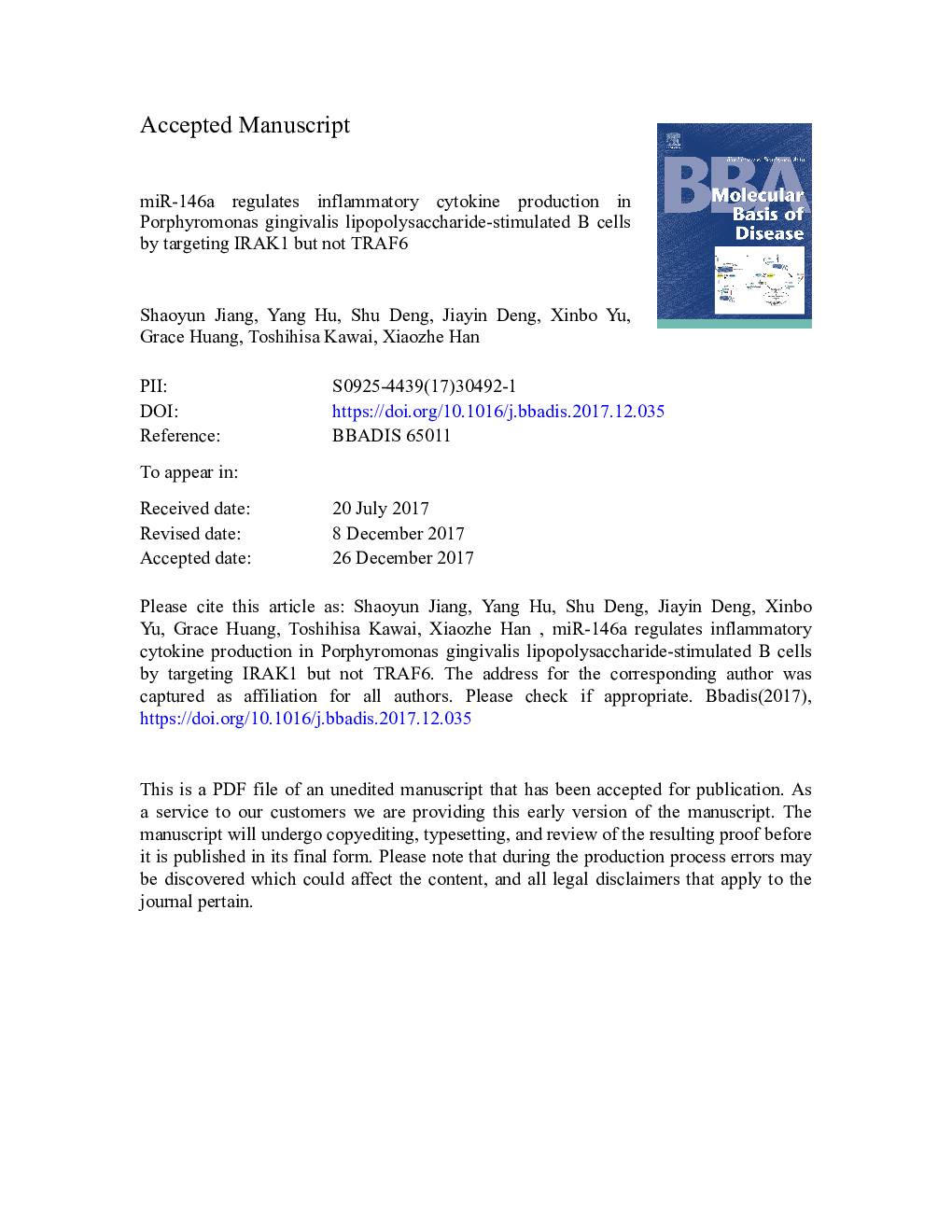| Article ID | Journal | Published Year | Pages | File Type |
|---|---|---|---|---|
| 8258659 | Biochimica et Biophysica Acta (BBA) - Molecular Basis of Disease | 2018 | 35 Pages |
Abstract
It has been suggested that microRNAs (miRs) are involved in the immune regulation of periodontitis. However, it is unclear whether and how miRs regulate the function of B cells in the context of periodontitis. This study is to explore the role of miR-146a on the inflammatory cytokine production of B cells challenged by Porphyromonas gingivalis (P. gingivalis) lipopolysaccharide (LPS). Primary B cells were harvested from mouse spleen. Quantitative real-time polymerase chain reaction (qPCR), enzyme-linked immunosorbent assay (ELISA) were used to detect the expression of inflammatory cytokines in B cells in the presence or absence of P. gingivalis LPS and/or miR-146a. Bioinformatics, luciferase reporter assay and overexpression assay were used to explore the binding target of miR-146a. Our results showed that miR-146a level in B cells was elevated by P. gingivalis LPS stimulation, and the mRNA expressions of interleukin (IL)-1β, 6 and 10, and IL-1 receptor associated kinase-1 (IRAK1), but not TNF receptor associated factor 6 (TRAF6), were also upregulated. The expression levels of IL-1β, 6, 10 and IRAK1 were reduced in the presence of miR-146a mimic, but were elevated by the addition of miR-146a inhibitor. MiR-146a could bind with IRAK1 3â² untranslated region (UTR) but not TRAF6 3â²-UTR. Overexpression of IRAK1 reversed the inhibitory effects of miR-146a on IL-1β, 6 and 10. In summary, miR-146a inhibits inflammatory cytokine production in B cells through directly targeting IRAK1, suggesting a regulatory role of miR-146a in B cell-mediated periodontal inflammation.
Keywords
PBSLPSmiRsP. gingivalisGAPDHA. actinomycetemcomitansAggregatibacter actinomycetemcomitansIRAK1TRAF6interleukinmiR-146aELISAEnzyme-linked immunosorbent assaymicroRNAsTNF receptor associated factor 6phosphate buffer salineB celllipopolysaccharideUTR یا untranslated regions untranslated regionoptical densityPorphyromonas gingivalisglyceraldehyde-3-phosphate dehydrogenase
Related Topics
Life Sciences
Biochemistry, Genetics and Molecular Biology
Ageing
Authors
Shaoyun Jiang, Yang Hu, Shu Deng, Jiayin Deng, Xinbo Yu, Grace Huang, Toshihisa Kawai, Xiaozhe Han,
